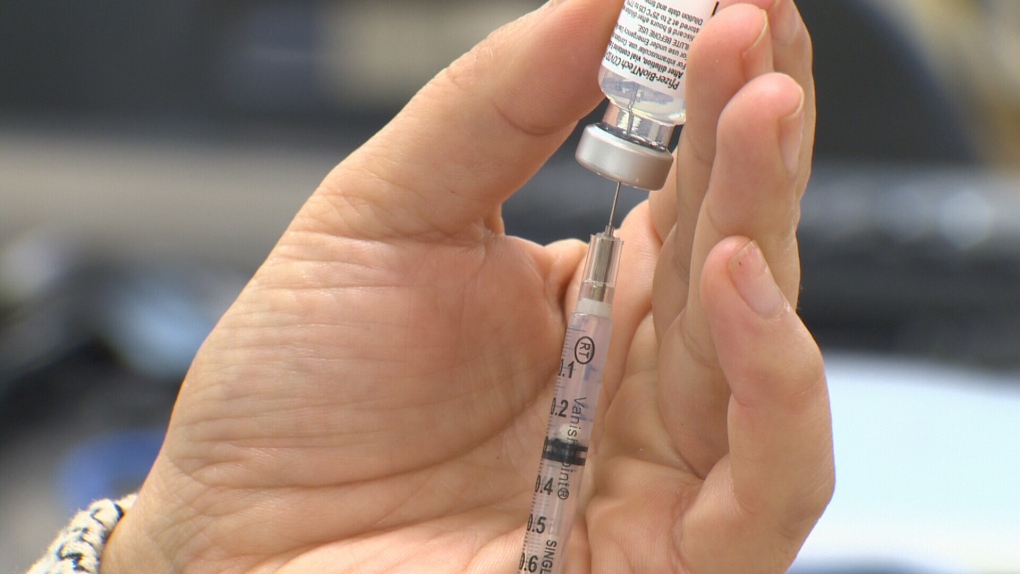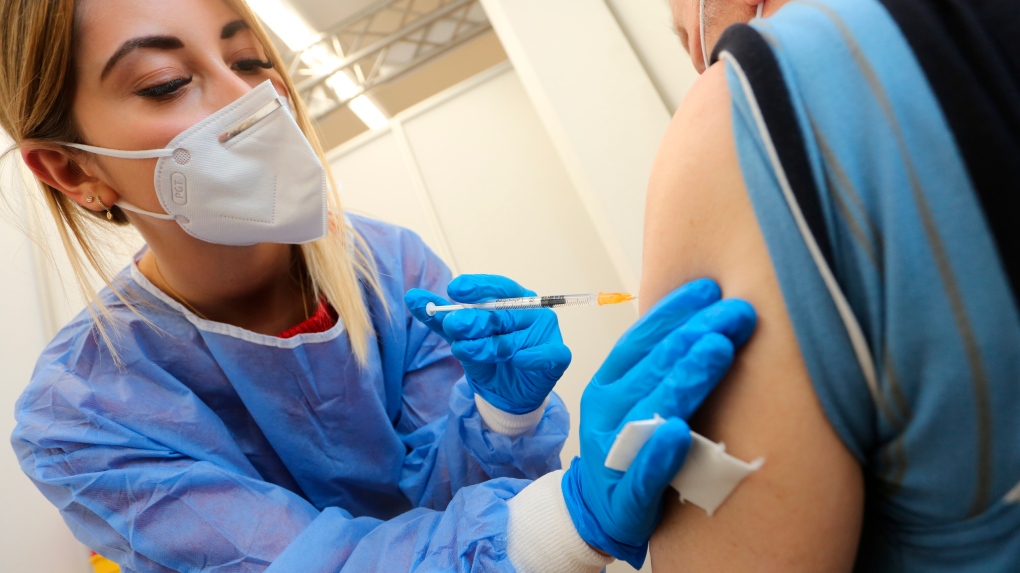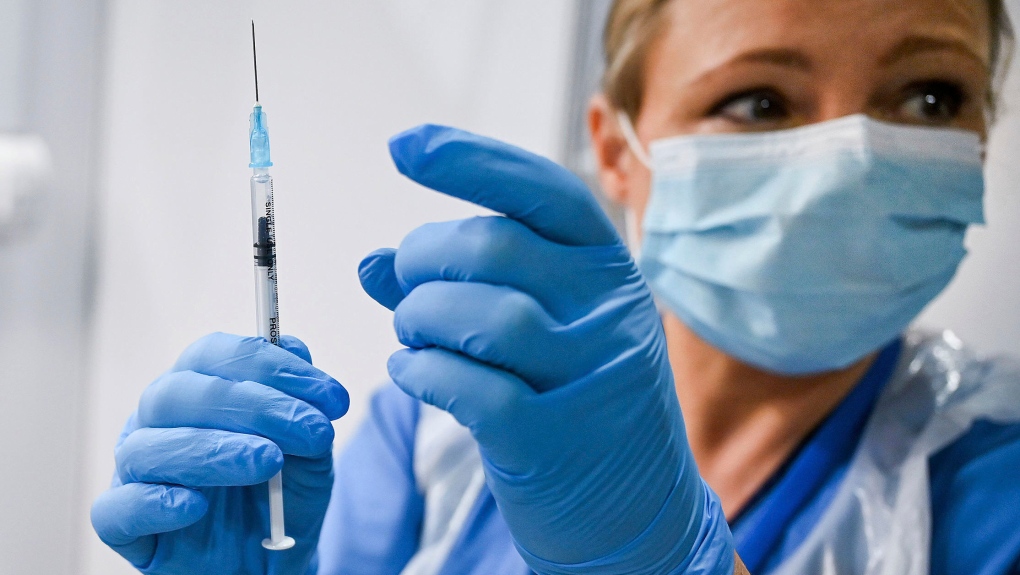Nearly 80 per cent of Ont.'s eligible population has received at least one vaccine dose. How do we reach the rest?
Across Ontario, around 80 per cent of adults have now received a COVID-19 vaccine and more than 50 per cent are fully vaccinated.
But in recent weeks, the first-dose uptake has slowed, despite a push to get second jabs into arms as quickly as possible.
With approximately 20 per cent of the eligible population still completely unvaccinated, health officials and experts say a different approach is needed to reach those who are vaccine-hesitant or late adopters.
From community outreach to increased involvement of family doctors to incentives, we asked experts about how to bridge the gap and continue to drive up vaccination rates.
A TAILORED APPROACH
"When we think about that group we're going to have to be more tailored," said Dr. Elizabeth Muggah, a physician based in Ottawa and president of the Ontario College of Family Physicians. "It's really going to look different than the mass clinics."
Some may prefer to receive a vaccine or have educational outreach through a faith community. Those in the BIPOC community, who may have trust or racism concerns, may also feel more comfortable working with a community association, Dr. Muggah said.
To reach youth, employing more social media outreach will also be important, she said, while homebound patients will need to be reached in other ways.

Utilizing home care nurses could add another element of outreach by meeting patients where they are at, Dr. Muggah explained.
And while the vaccination rates look promising – more than 80 per cent with a first dose – Dr. Muggah said that's just the average, and doesn't look at specific populations or groups that may be at higher risk for contracting COVID-19.
"In some groups, we're seeing less uptake," she said. "Sometimes those are groups that are particularly vulnerable."
BREAKING DOWN BARRIERS
Susan Bondy, an epidemiologist at the University of Toronto's Dalla Lana School of Public Health, agrees that more targeted, community-specific tactics will be needed to further increase vaccination rates.
She said it's not surprising to see first-dose vaccination rates tapering off, citing the "diffusion of innovation" theory.
"You typically find there are people who are quick to take up the new thing, a huge proportion of the population that rides the wave, it becomes the big movement," she said. "It always ebbs off."
Bondy said there are predictable attributes about late adopters to health innovations.
"You can anticipate they are going to be more socially conservative, older, relatively less educated, relatively less affluent," she explained. "There are many, many pockets of the community that are different from the mainstream, some of them are going to be members of a community that are not interested in vaccines for whatever reason."
She said not everyone who hasn't yet gotten the jab is necessarily anti-vaccine, but may simply have "less urge" to do it. Others may be part of communities that are disenfranchised by the health system or government or feel mistreated by those institutions.
INCREASING VACCINE UPTAKE
Bondy said there are two rules to increasing vaccine uptake: always take an empathic approach, and understand that people will listen to people that they can relate to.
Pop-up clinics should continue to be utilized in high-risk neighbours and communities with high rates of COVID-19, she explained.
"If it's the right mood, right opportunity, the right schedule, they’ll grab it," Bondy said.
 Geriatric nurse Jasmin Lasse vaccinates in the vaccination centre in Quedlinburg, Germany, Thursday, May 13, 2021. (Matthias Bein/dpa via AP)
Geriatric nurse Jasmin Lasse vaccinates in the vaccination centre in Quedlinburg, Germany, Thursday, May 13, 2021. (Matthias Bein/dpa via AP)
Unique venues could also provide a strategy to increase vaccination. She said outreach opportunities could be found at fall fairs or even theatres, places where community members gather, to provide education and "teachable moments" about vaccines.
That wouldn't be an entire novel approach. In April, vaccinations were offered at a Milwaukee Bucks basketball game in the United States.
Bondy called the next step of the vaccine rollout the "yes, and" phase, adding more elements to complement what's already worked well.
"We've done the really big clinics, and now it's moving to different strategies," she said. "A multi-component campaign of many small programs, separated into many small community-based, human-based programming."
DO INCENTIVES WORK?
Some jurisdictions, including Alberta, have opted for strategies like entering folks who get vaccinated into lotteries to win prizes. Recently, the Grey Bruce health unit announced those who get the jab at a mass vaccination clinic or volunteer at one will be entered to win a golf trip with a former NHL Hall of Famer.
But do incentives work? Bondy says yes.
She said it’s a strategy used all the time to increase participation in research studies – and it's effective.
"We use lotteries as an incentive all the time because it's shown to increase response rates," Bondy said.
 Paula McMahon prepares a shot of the Pfizer-BioNTech COVID-19 vaccine, as the mass public vaccination program gets underway, at the NHS Louisa Jordan Hospital in Glasgow, Scotland, Tuesday Dec. 8, 2020. (Jeff J Mitchell/Pool via AP)
Paula McMahon prepares a shot of the Pfizer-BioNTech COVID-19 vaccine, as the mass public vaccination program gets underway, at the NHS Louisa Jordan Hospital in Glasgow, Scotland, Tuesday Dec. 8, 2020. (Jeff J Mitchell/Pool via AP)
It's a similar tactic used by charities to solicit donations and is also a cost-effective model for jurisdictions to adopt if needed, she explained.
"It isn’t so much that it's remuneration, it's not a bribe," Bondy said. "It's actually much more of a sign of respect."
Similarly, little perks like free ice cream, swag or stickers post-vaccination add to a sense of festivity and positive feelings around getting vaccinated.
"It makes you feel respected, valued, thanked," Bondy said.
As we move away from mass vaccination clinics, Bondy said the "motivators" and "pick-me-ups" offered will need to shift as well. "We should modify and be very creative," she said.
WHAT ABOUT RESTRICTIONS?
"It's not black and white," Bondy said on the idea of restrictions for those who are unvaccinated. "We've heard that a lot about prohibition, illegality, bans against things that are unhealthy."
Despite mixed opinions about the need and efficacy of things like vaccine passports, Bondy said the majority of the public would follow federal and provincial restrictions if they were put in place.
"To say it's ineffective is actually inaccurate," she said. "However, there will be people for whom it doesn’t work, there will be people who work around the system. It will not work perfectly. Does that mean we don’t do it at all? That’s not the conclusion we would draw."
THE ROLE OF FAMILY DOCTORS
Dr. Muggah said family doctors will be an important part of the next stage of the vaccine rollout.
"We have a unique role to play right now," she said. "Our patients, we've known our patients for their lifetime, their health history, they trust us."
Multiple, nuanced and individual conversations between doctors and vaccine-hesitant patients are needed to increase uptake, Dr. Muggah said.
"There are people that are just not sure about getting the vaccines, and we know it takes multiple visits and conversations with people in terms of getting them ready," she explained.
 In this file photo, a nurse holds a phial of the Pfizer-BioNTech COVID-19 vaccine at Guy's Hospital in London, Tuesday, Dec. 8, 2020. (AP Photo/Frank Augstein, Pool)
In this file photo, a nurse holds a phial of the Pfizer-BioNTech COVID-19 vaccine at Guy's Hospital in London, Tuesday, Dec. 8, 2020. (AP Photo/Frank Augstein, Pool)
Currently, Dr. Muggah said most family doctors in the province are having conversations about COVID-19 vaccines with patients whenever they interact.
"When you think about building vaccine confidence 101, the first thing you would learn is every person has unique reasons for why they may not be ready," Dr. Muggah said.
From needle phobia to barriers accessing mass vaccination clinics to fears of adverse reactions, she said it's essential to understand what is holding someone back and work through those concerns or questions.
Later in July, Dr. Muggah said family doctors will be supplied a list of the vaccination status of their patients by the Ontario Ministry of Health, which they can then use to begin outreach to those who are not yet vaccinated.
While not all doctors' offices currently have COVID-19 vaccines on hand to administer, she said more and more are getting access as the vaccine rollout continues.
That will allow family doctors to immediately vaccinate patients on-site, or eliminate barriers for those who don't wish to attend large clinics or those who feel safer in a doctor's office.
Having doses on-site will also allow for "opportunistic vaccination," where a patient comes in for one reason and the vaccine is added on to their visit.
"It does make a difference, and for those patients in that 20 per cent, in particular, it adds another level of comfort for them," Dr. Muggah said. "We definitely see that this is a place for us right now to step in."
THE BIG INCENTIVE: A RETURN TO NORMAL
Zahid Butt, a public health professor at the University of Waterloo, said a return to normalcy is a "big incentive" for getting vaccinated.
"What I would like to say to people who are vaccine-hesitant is … the major reason is that we want to reopen, we want to go back to a normal situation as soon as possible," he said. "Vaccination is one of the important ways to do that."
Butt said reaching herd immunity as soon as possible is important, adding with the more contagious Delta variant circulating, vaccination is the best protection against severe illness.
"If you get vaccinated, you're protecting yourself and you're also protecting your community," he said.
CTVNews.ca Top Stories

'They needed people inside Air Canada:' Police announce arrests in Pearson gold heist
Police say one former and one current employee of Air Canada are among the nine suspects that are facing charges in connection with the gold heist at Pearson International Airport last year.
House admonishes ArriveCan contractor in rare parliamentary show of power
MPs enacted an extraordinary, rarely used parliamentary power on Wednesday, summonsing an ArriveCan contractor to appear before the House of Commons where he was admonished publicly and forced to provide answers to the questions MPs said he'd previously evaded.
Leafs star Auston Matthews finishes season with 69 goals
Auston Matthews won't be joining the NHL's 70-goal club this season.
Trump lawyers say Stormy Daniels refused subpoena outside a Brooklyn bar, papers left 'at her feet'
Donald Trump's legal team says it tried serving Stormy Daniels a subpoena as she arrived for an event at a bar in Brooklyn last month, but the porn actor, who is expected to be a witness at the former president's criminal trial, refused to take it and walked away.
Why drivers in Eastern Canada could see big gas price spikes, and other Canadians won't
Drivers in Eastern Canada face a big increase in gas prices because of various factors, especially the higher cost of the summer blend, industry analysts say.
Doug Ford calls on Ontario Speaker to reverse Queen's Park keffiyeh ban
Ontario Premier Doug Ford is calling on Speaker Ted Arnott to reverse a ban on keffiyehs at Queen's Park, describing the move as “needlessly” divisive.
'A living nightmare': Winnipeg woman sentenced following campaign of harassment against man after online date
A Winnipeg woman was sentenced to house arrest after a single date with a man she met online culminated in her harassing him for years, and spurred false allegations which resulted in the innocent man being arrested three times.
Woman who pressured boyfriend to kill his ex in 2000s granted absences from prison
A woman who pressured her boyfriend into killing his teenage ex more than a decade ago will be allowed to leave prison for weeks at a time.
Customers disappointed after email listing $60K Tim Hortons prize sent in error
Several Tim Horton’s customers are feeling great disappointment after being told by the company that an email stating they won a boat worth nearly $60,000 was sent in error.
































